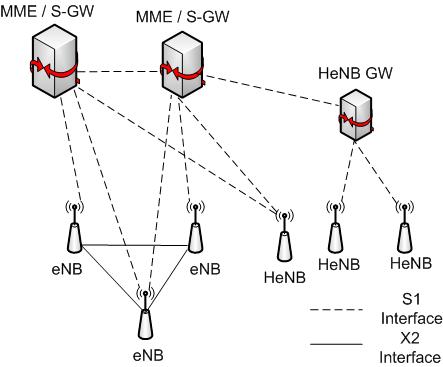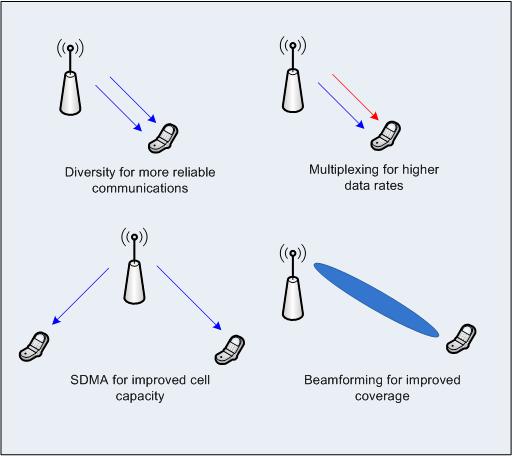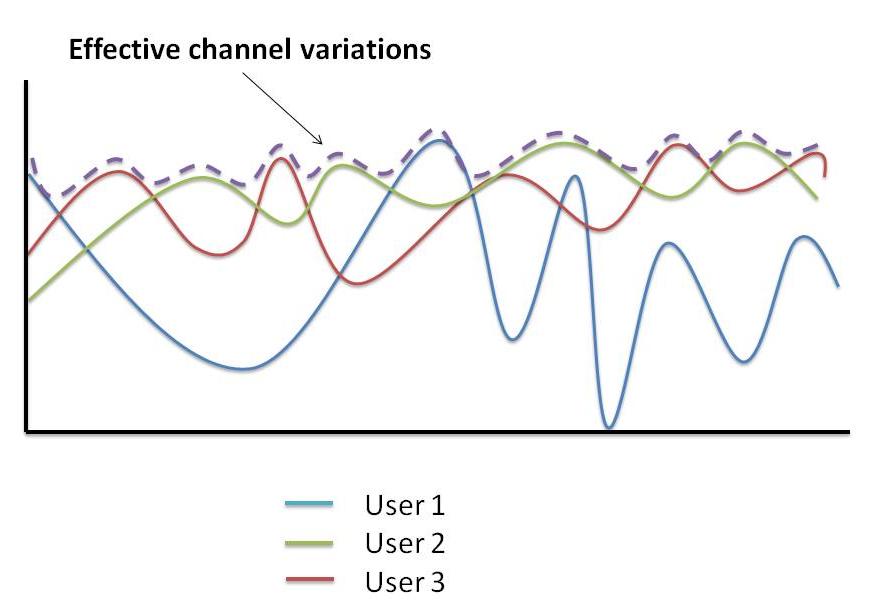School of Electrical and Computer Engineering Georgia Institute of Technology
LTE-Advanced and the Evolution to 4G Cellular Systems
Project Description
Service Architecture Evolution (SAE) & Long Term Evolution (LTE)
The Third Generation Partnership Project (3GPP) specifies in its 3GPP Release 8 the elements and requirements of the Evolved Packet System (EPS) architecture that will serve as basis for next-generation networks. The most important work items in 3GPP Release 8 are the service architecture evolution (SAE) and long term evolution (LTE), which led to the specifications of the Evolved Packet Core (EPC), Evolved Universal Terrestrial Radio Access Network (E-UTRAN) and Evolved Universal Terrestrial Radio Access (E-UTRA)
The EPC is a flat all-IP-based core network that can be accessed through 3GPP radio access (LTE, 3G, 2G) and non-3GPP radio access (e.g. WiMAX, WLAN), allowing handover procedures within and between both radio access types. The access flexibility to the EPC is attractive for operators since it enables them to have a single core network through which different services are supported. The main components of the EPC are the following:
However, from a user-plane perspective, there are only the base station (eNodeB) and the gateways, which is why the system is considered “flat”. This results in a reduced complexity compared to previous architectures. For further details regarding these elements and other elements of the EPC, the official specifications can be found in [1] and [2].
The E-UTRAN architecture consists of eNBs that provide the air interface user plane and control plane protocol terminations towards the UE. On one side, the user plane protocols consist of Packet Data Control Plane (PDCP), Radio Link Control (RLC), Medium Access Control (MAC) and Physical Layer (PHY) protocols. On the other side, the control plane protocol refers to the Radio Resource Control (RRC) protocol.
Each of the eNBs are logical network components that serve one or several E-UTRAN cells and are interconnected by the X2 interface. Additionally, Home eNBs (also called femtocells), which are eNBs of lower cost, can be connected to the EPC directly or via a gateway that provides additional support for a large number of HeNBs

E-UTRAN architecture.
The main functionalities hosted by the E-UTRAN are enumerated in the following:
The LTE E-UTRA work item is essential so that an optimized packet-based access system can achieve the expected system performance in terms of high data rates and low latency. E-UTRA is also expected to support mobility up to 350 km/h, conserve mobile station’s power consumption through micro-sleep, and provide seamless integration of unicast and enhanced broadcast transmission. Key techniques for the LTE air interface are summarized as follows:

MIMO techniques in LTE.

Channel-dependent scheduling.
| Transmission Bandwidth (MHz) | 1.4 | 3 | 5 | 10 | 15 | 20 | |
| Subframe duration | 1 ms | ||||||
| Sub-carrier spacing | 15 kHz | ||||||
| Sampling frequency (MHz) | 1.92 | 3.84 | 7.68 | 15.36 | 23.04 | 30.72 | |
| FFT Size | 128 | 256 | 512 | 1024 | 1536 | 2048 | |
| Number of occupied sub-carriers | 75 | 150 | 300 | 600 | 900 | 1200 | |
| Cyclic Prefix Length (μs) | Short CP | 4.69x6 5.21x1 | |||||
| Long CP | 16.67 | ||||||
3GPP decided to further enhanced LTE not only to qualify as a 4G technology but to surpass it. In order to do so, it defined the following requirements:
| Low mobility scenario | High mobility scenario |
| 1 | 0.1 |
| Downlink | Uplink |
| 1 | 0.5 |
| Antenna Configuration | [bps/Hz/cell/user] | |
| UL | 1x2 | 0.04 |
| 2x4 | 0.07 | |
| DL | 2x2 | 0.07 |
| 4x2 | 0.09 | |
| 4x4 | 0.12 | |
| Downlink | Uplink |
| 1 | 0.5 |
| Antenna Configuration | [bps/Hz/cell] | |
| UL | 1x2 | 1.2 |
| 2x4 | 2.0 | |
| DL | 2x2 | 2x4 |
| 4x2 | 2.6 | |
| 4x4 | 3.7 | |
| Bands (MHz) | Bands (GHz) |
| 450-470 | 2.3-2.4 |
| 698−862 | 3.4-4.2 |
| 790−862 | 4.4-4.99 |
| Speed (km/h) | Support |
| 0-10 | Enhanced |
| 10 – 350 | Preferably enhanced (at least not worst than LTE) |
In addition to the previous requirements, LTE-A is targeted to have low cost and complexity UE and infraestructure, enhanced support for MBMS and VoIP, and considers deployment scenarios for indoor eNodeBs. For more detailed information regarding each of these requirements, the official specifications can be found at [X1] and [X2]
[Back to top]LTE-Advanced: Technical Proposals
In order to fulfill these requirements, LTE-A propose the following techniques:
While in LTE the maximum bandwidth considered was 20 MHz. LTE-A will support up to 100 MHz bandwidth by aggregating two or more LTE "Component Carriers" (CC) of up to 20MHz. These component carriers can be continuous or discontinuous in a single spectrum band, or from different spectrum bands.
Multi-antenna techniques are already one of LTE key features and are expected to have even a greater importance in LTE-A systems. In order to meet the peak spectrum efficiency, antenna configurations of 8x8 for downlink transmission and 4x4 for uplink transmission are being investigated. Further, LTE-A MIMO technologies are also designed with the aim of improving cell average throughput as well as cell edge performance. An uniform and adaptive MIMO platform is thought in order to accomodate demand of high data rates and wider coverage by switching from one mode to another. Two main approaches are distinguished in LTE-A MIMO: single-site MIMO, where only one base station is utilized for the transmission and multi-site MIMO where several base stations may collaborate in the transmission of a single stream
LTE-A defines in general terms CoMP as the "coordination in the downlink/uplink from/to multiple geographically separated transmission/reception points". Antennas of multiple cell sites are used in such a way that they can contribute to improve the quality of the received signal at the UE/eNB and drastically reduce the inter-cell interference. This will demand very fast inter-eNB connections and some additional control strategy that might be centralized or not.

Beyond these technical proposals already identified by 3GPP to improve the overall performance of the network, there are several other technologies and techniques that can be incorporated into next generation cellular systems to improve their performance. We will explore several of these options and their applicability to next generation cellular systems.
You are visitor:
since 11/13/2009.